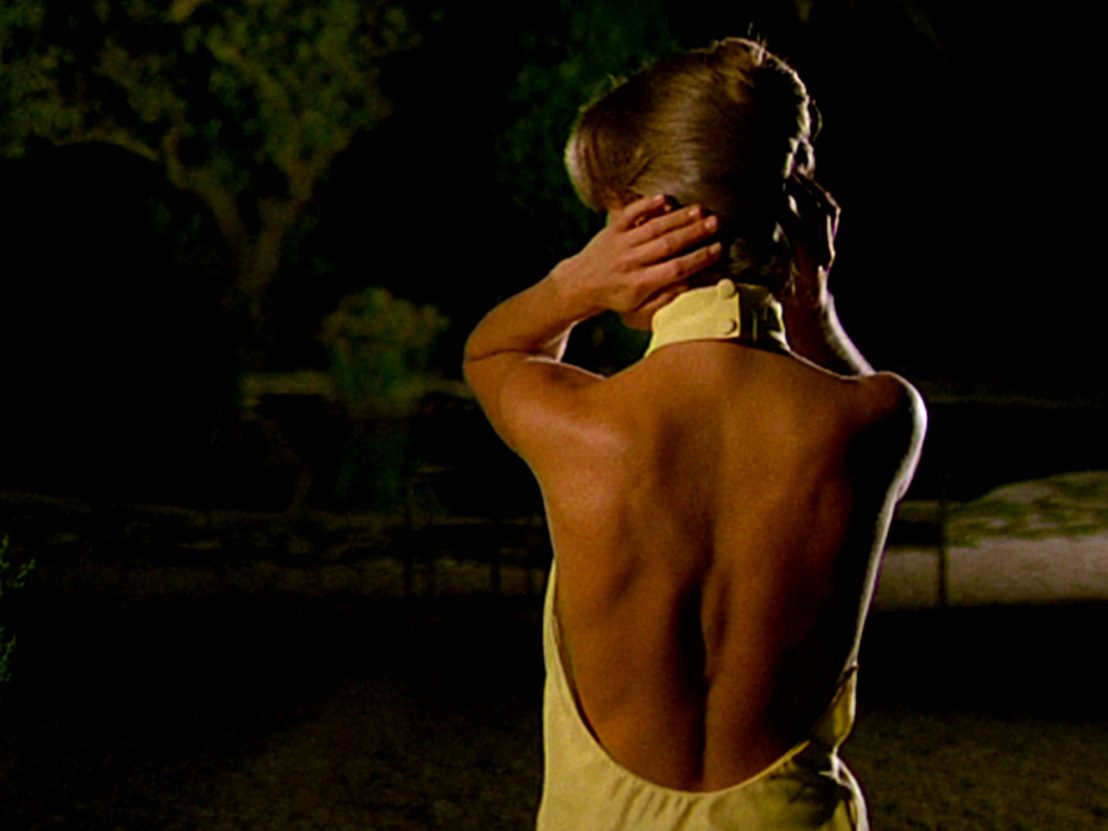
There is a moment in Jacques Deray’s 1969 film The Swimming Pool where Marianne (a stunning Romy Schneider) lounges in a poolside chair, gazing up at a starry sky. It’s late; she’s dressed for the evening. Her boyfriend Jean-Paul (an equally stunning Alain Delon) talks to her softly. The camera scrutinises Marianne closely: the thick black of her eyeliner, the reddish blonde curve of her French twist, the line of her neck. At the nape, two or three buttons close a white mock neck.
“You’re stupid,” Marianne tells Jean-Paul, and as she takes long strides toward the pool the shot widens and her dress is revealed to be backless. For a few seconds, all movement halts: the exposure of her tanned, slim back confronts the audience like a hard stare.
Jean-Paul isn’t any less impressed. The scene ends in sex, his fingers dextrously undoing Marianne’s buttons. The sex itself, though, doesn’t lead anywhere in particular, other than the upkeep of the sexual tension that rises and wanes between the couple, an eternal tease. There are many moments like this in The Swimming Pool. In a hot flash, passion flares and then cools unceremoniously.
The film follows the couple on vacation in St Tropez. They are joined by their friend Harry (Maurice Ronet) and his daughter Penelope, played by a 23-year-old Jane Birkin. The arrival of Birkin is reason enough to cause sexual disarray anywhere, but compounding it is the fact that Harry is Marianne’s former – and possibly current – lover. The ménage à quatre stumbles and slips poolside for a few days until it all becomes too much for Jean-Paul, who breaks the illusion of idyll to enact a sinister revenge.
The Swimming Pool is often described as an erotic thriller or a psychosexual drama, but it lacks the heart-pounding component that defines these genres. Besides, as far as erotica goes it features only a very modest amount of sex scenes. It seems that what is being referred to is not Jean-Paul’s eventual crime, or even the sexual entanglements of this preposterously attractive cast, but the viewer’s unshakeable inkling, from the moment Harry and Penelope step foot into the villa, that something bad is about to happen.
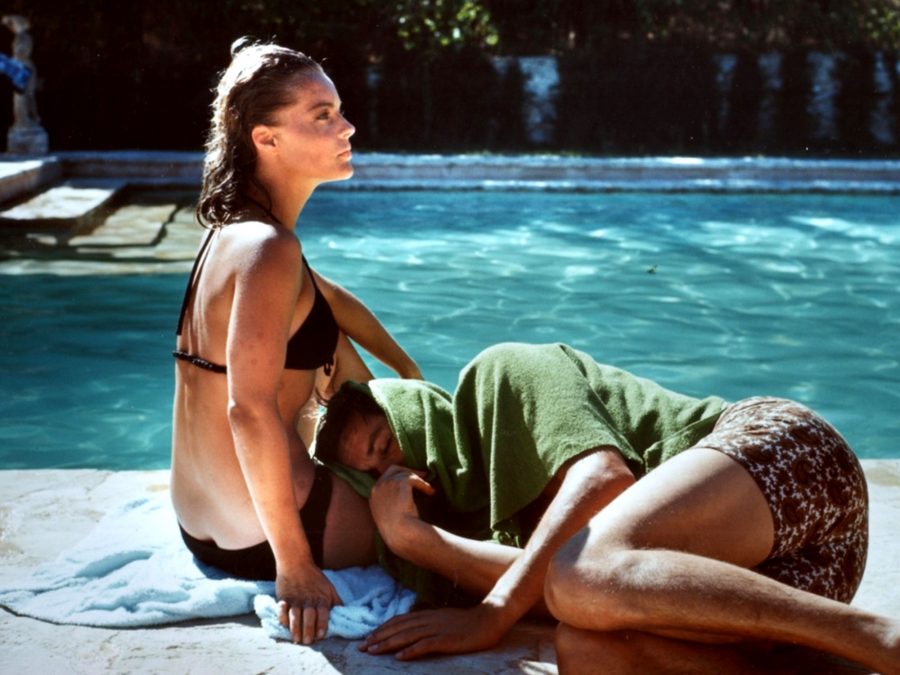
It’s not the kind of suspense that will keep you on the edge of your seat, though: more the kind that will settle in a corner across the room, leave, then sneak back in, making itself felt but never visible. This tension is a lot like the game of seduction. The sexiest thing is never to reveal totally and all at once, but to keep raising the suggestion. Like a dress with a modest neckline and an open back.
A few days after the white mock neck, Marianne shows up for dinner wearing a long green, blue and yellow dress with a high neckline that pleats at the base of her neck and falls toward the floor in folds, creating a tear-shaped slit perfectly moulded to the curves of her back. With its bright pattern, the dress calls attention to itself, its folds picking up the wind to reveal Marianne’s back as if they could control the weather. “Will you hook me in the back?” Marianne asks Harry.
At this point in the film, the sexual tension in the villa reaches feverish heights, and Harry reaches into the folds of Marianne’s dress to touch her back, breaking the fever into a sweat. From here on out, every touch could end in death. Maybe one of the reasons why it is Marianne’s back that is often exposed, instead of, say, her midriff or even her long legs, is that her back creates a distance between perception and touch, always poised to take one more step forward and away.
The contours of her half-exposed figure – which Harry and Jean-Paul fight over – suggest an edge that refuses to reveal itself completely but is loath to go unperceived. An exposed back can symbolise vulnerability, except when the exposure is calculated to emphasise imperiousness, as if to say: there it is, my exposed back, would you dare?
Marianne takes equal distance from the crime by being not murderer or victim but catalyst. She floats on the surface of the events with the nonchalance of a cool girl who indulges secretly in the boys’ lethal fight for her companionship. Pool water droplets bead her back, when not showing through a dress then interrupted by the string of a bikini top, or entirely naked, reflecting the white glimmer of the pool.
In the film’s very first line, Marianne pleads with Jean-Paul softly as she lies on top of him: “Will you scratch my back?” The tension of the entire film rides on this line; on Marianne’s back, on the way it is never soaked but always damp, attracting a darting look, being irresistible to touch. It begs you to come close, then turns on you and walks away.
Published 5 Jun 2021
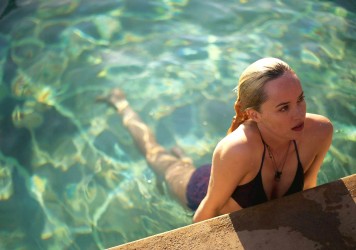
By Nick Chen
A shallow body of water harbours deep emotions in Luca Guadagnino’s scintillating Sicilian drama.
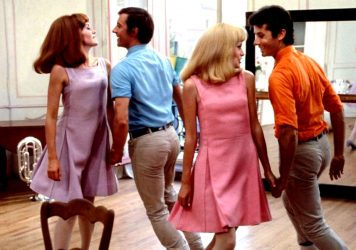
By Adam Scovell
With The Young Girls of Rochefort, the French director created something wondrously original.
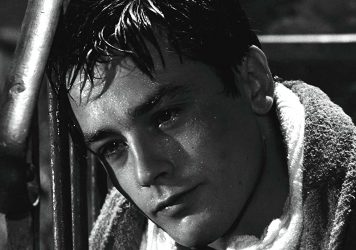
The French screen idol is at his most open and vulnerable in Luchino Visconti’s 1960 crime drama.